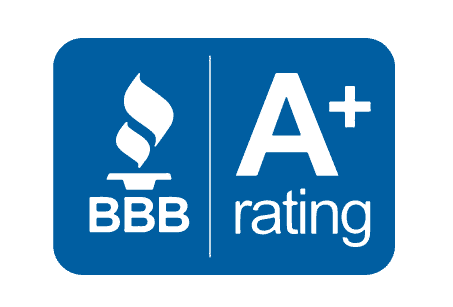
Drug addiction has led to the rise of crimes, health care costs, child abuse, and familial neglect in recent years. People find it easy to pin the blame on substances like cocaine due to their noticeable, destructive results.
However, other substances appear nonaddictive at first but are, in fact, among the most addictive drugs out there.
Not sure if the substance a friend is taking might lead to long-term addiction? If you want to help steer your friends away from drugs, here’s list of 10 addictive substances that you will likely come across.
Nicotine
You’ll often hear of nicotine in cigars and cigarettes is common because of the tobacco it contains. However, it is also found in some food products such as tomatoes, eggplants, and green peppers.
In 2016, it’s recorded that around $9.5 billion went to advertising cigarettes across the United States. This makes it one of the most popular addictive drugs to date.
Someone addicted to nicotine will often find it difficult to quit. This is because nicotine acts as both a stimulant, giving its users a kick when taking nicotine into their bodies, an as a sedative, for some users experience reduced anxiety when exposing their bodies to it.
Users become addicted to the substance because nicotine releases dopamine in the brain, around the pleasure area. This causes them to feel a sense of euphoria that fades away fast, leaving users to want more to experience it again.
Methamphetamines
Methamphetamines, also called meth for short, are powerful stimulants that do a lot of things for the body like giving it increased physical strength, stamina, awareness, and decreases fatigue for a short time when used in small doses.
It also causes a myriad of problems to occur, such as a considerable increase in body temperature, uncontrollable breathing, and can cause someone’s heart rate to beat at an extreme pace. Overdosing more often than not leads to death if not treated fast.
The brain releases dopamine in huge quantities when people use methamphetamines, leading them to use more of the drug and become addicted.
Amphetamines
A typical example for amphetamines is Adderall. And like methamphetamines, these are also stimulants, but doctors can prescribe these to their patients.
Amphetamines are usually used to help with cases of ADHD or Narcolepsy. They give the user a rush of energy that helps them focus or stay awake.
Some people, however, find that they get a greater rush of energy when they crush and snort their medication instead of taking it the recommended way. The greater rush also increases their tolerance to the medication; thus, they need more of it for the effects to work as intended.
Combined with how easy it is to acquire amphetamines, users have turned this into one of the most addictive substances around.
Barbiturates
Given the street name “downers,” these are sedatives that are usually used to help with anxiety and help a patient sleep.
The effect of barbiturates on the brain is that it gives off a high that help the stress melt away and calm you down, because of this, it is also a standard treatment for someone having seizures. It is easy to get addicted to this feeling and most people abuse barbiturates because of it.
Most people don’t know, however, that small, unprescribed doses of barbiturates can give the individual a problem in focusing. They will notice that they will not be able to absorb something they’re reading, or they will find that making decisions will prove difficult for them.
Large doses cause even more troubling side effects such as unsteadiness, loss of consciousness, and even suppressed breathing.
Morphine
Morphine is a painkiller that’s extracted from poppy, often in the form of an injectable liquid, that help ease the severe pain for people undergoing continuous treatment like surgery or cancer-related therapy.
As it is regular to keep injecting morphine into a patient with ongoing treatment, it is easy for someone to develop an addiction.
Getting addicted to morphine means that dopamine production in the brain will shut down due to the flood of morphine. This addiction can also lead to habitual drug seeking, which will add to the list of addictions if it is not kept in check.
Heroin
Considered to be the hardest drug to quit, heroin also comes from the poppy flower. It is a potent sedative that is very easy to get addicted to. One or two uses of this drug can get you hooked quick.
Heroin will cause your veins to collapse, bring about skin infections, and increase the risks of getting HIV, hepatitis B and C, lung diseases, and pneumonia. Users say, however, that trying to quit the use of heroin will leave them feeling like their bones are shaking and hurting along with their muscles.
This makes trying to quit heroin use very difficult, even when users receive proper treatment and have the help of methadone to overcome their addiction.
Crack Cocaine
Unlike its powdered counterpart, people get crack cocaine by mixing the powdered cocaine with water and baking soda. The resulting product is a small crystal that’s said to give a more intense euphoric high when snorted rather than smoked.
The use of crack cocaine leads to several problems for one’s health including lung problems and psychotic thoughts. Many still use crack cocaine because they never stopped feeling happy while under the influence. They later develop an intense craving for another round of euphoria shortly after crashing.
GHB
This is a party drug that is popular among younger people as it makes the users feel more relaxed around people.
Acting as a depressant, it slows down the brain activity of the user. This is why the drug is often used after people have taken something strong like heroin or cocaine, to prepare them for the next dose.
On its own, GHB causes the user to experience a loss of coordination, vomiting, and most times it causes the users to stop breathing.
OxyContin
This drug was once a time-released painkiller. Oxycontin later found abuse from people who crushed the tablet or opened up the pill and snorted its powdered contents.
Oxycontin is usually used as a “gateway” drug to other, stronger drugs such as heroin.
Addiction to oxycontin often results in the user feeling some anxiety and depression. Victims also find that they have a lowered threshold for pain.
More severe cases show that users experience hallucinations and have panic attacks.
Benzodiazepines
Benzodiazepines are tranquilizers, a type of medication that serves to sedate users to calm them down, like Valium or Xanax.
Abusing benzodiazepines in small doses gives users insomnia and anxiety. At larger doses, they will experience slurred speech, a lack of coordination, some difficulty when it comes to breathing. At worst-case scenarios, they will fall into a coma.
Stay Away from the Most Addictive Drugs Now
Keep yourself safe and make sure that you know the most addictive drugs in your neighborhood so you can avoid them yourself.
Have you or anyone you know already gotten addicted to one of the drugs on the list? Don’t worry; it’s not too late for you to change for the better. Visit us now so you can get help today.





